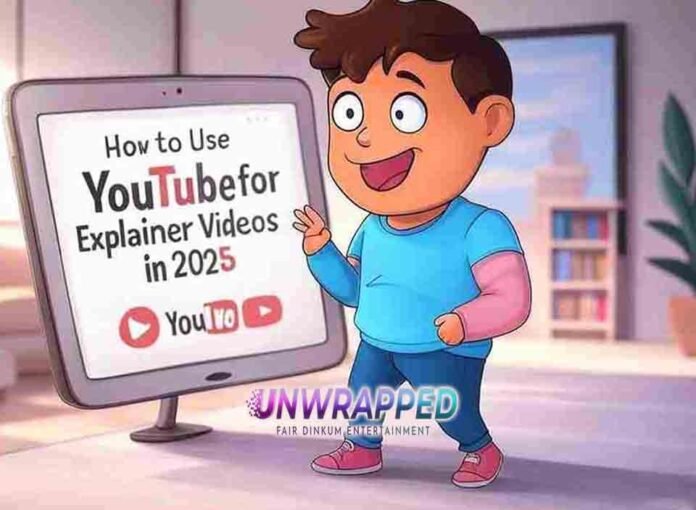Explainer videos have become a cornerstone of digital content, offering concise and visually engaging explanations of complex topics. In 2025, YouTube remains the ideal platform for sharing explainer videos, reaching a vast audience, and building authority in your niche. Whether you’re a business, educator, or creator, mastering the art of explainer videos can significantly elevate your online presence.
This guide will take you through the process of creating high-quality explainer videos on YouTube, from ideation to promotion, ensuring your content stands out and delivers maximum value.
Why Create Explainer Videos on YouTube?
The Popularity of Explainer Videos
- High Engagement: Explainer videos are known for their ability to grab attention and retain viewers.
- Diverse Applications: They can simplify technical concepts, promote products, or educate audiences.
- Increased Reach: YouTube’s algorithm favors videos with high engagement, making well-crafted explainers more discoverable.
Pro Tip: Explainer videos that solve specific problems or answer common questions are more likely to go viral.
Step 1: Define Your Purpose and Audience
Identify Your Goal
Before you start, clarify the purpose of your explainer video:
- Educate your audience about a concept.
- Promote a product or service.
- Build brand awareness or establish thought leadership.
Know Your Audience
- Who Are They? Professionals, students, or general audiences.
- What Do They Need? Clear, concise explanations with visual aids.
Pro Tip: Use audience insights from YouTube Analytics or tools like Google Trends to tailor your content.
Step 2: Plan Your Content
Types of Explainer Videos
- How-To Guides: “How to Use AI Tools to Automate Your Workflow.”
- Product Demos: “Features of the Latest Electric Car Model.”
- Concept Explainers: “Understanding Blockchain Technology in 5 Minutes.”
- Case Studies: “How a Small Business Tripled Its Revenue with SEO.”
- Problem-Solving Videos: “Why Your Internet Keeps Dropping and How to Fix It.”
Develop a Script
- Write a concise, engaging script that gets straight to the point.
- Use storytelling techniques to keep viewers invested.
- Break down complex ideas into bite-sized segments.
Pro Tip: Keep scripts conversational and avoid jargon, unless targeting a highly specialized audience.
Step 3: Create Engaging Visuals
Tools for Visual Content
- Animation Software: Use tools like Adobe After Effects, Blender, or Vyond to create animations.
- Graphic Design Tools: Leverage platforms like Canva or Figma for charts and infographics.
- Stock Footage: Enhance your video with clips from libraries like Pexels or Storyblocks.
Design Principles
- Use bold, contrasting colors for readability.
- Incorporate movement to keep the visuals dynamic.
- Align visuals with your script for clarity and coherence.
Pro Tip: Visual metaphors can make abstract concepts more relatable and easier to understand.
Step 4: Optimize Video Production
Equipment and Setup
- Camera: A smartphone or DSLR for live-action segments.
- Microphone: A high-quality USB mic like Blue Yeti for clear narration.
- Lighting: Softbox lights for a professional look.
- Editing Software: Tools like Final Cut Pro, DaVinci Resolve, or Camtasia.
Production Tips
- Record in a quiet environment to minimize background noise.
- Maintain a consistent style and tone across all videos.
- Add subtitles for accessibility and to enhance engagement.
Pro Tip: Test your setup to ensure all visuals and audio are clear before recording.
Step 5: Optimize for SEO
Craft SEO-Friendly Metadata
- Title: Use clear, keyword-rich titles like “What Is Quantum Computing? Simplified for Beginners.”
- Description: Include a detailed summary with links to additional resources.
- Tags: Add relevant tags like “explainer video,” “YouTube education,” or “concept tutorial.”
Create Thumbnails
- Use bold text and engaging visuals that reflect the video content.
- Keep the design clean and avoid overcrowding the thumbnail.
Pro Tip: Tools like TubeBuddy can help identify high-ranking keywords and optimize your metadata.
Step 6: Publish and Promote
Upload with Precision
- Choose the right category for your video.
- Use playlists to group similar content (e.g., “Tech Explain Series” or “Beginner Guides”).
- Schedule your upload time to match when your audience is most active.
Promote Your Video
- Share on social media platforms like LinkedIn, Twitter, and Facebook.
- Embed the video in blog posts or email newsletters.
- Collaborate with other creators to expand your reach.
Pro Tip: Use YouTube’s Community Tab to engage with subscribers and build anticipation for new videos.
Step 7: Engage Your Audience
Encourage Interaction
- Ask viewers to comment with their questions or opinions.
- Respond to comments promptly to foster a sense of community.
- Include a call-to-action (CTA) asking viewers to like, share, and subscribe.
Use YouTube Features
- Add end screens to promote related videos or playlists.
- Use cards to link to additional resources or other explainer videos.
Pro Tip: Conduct live Q&A sessions to directly address viewer concerns and build trust.
Step 8: Analyze Performance
Track Metrics
- Views and Watch Time: Assess overall engagement levels.
- Click-Through Rate (CTR): Optimize thumbnails and titles if CTR is low.
- Audience Retention: Identify drop-off points and adjust content accordingly.
Experiment and Iterate
- Test different formats, lengths, and styles.
- Update older videos with refreshed metadata and thumbnails.
Pro Tip: Use tools like VidIQ for in-depth performance analysis and keyword tracking.
Success Stories and Statistics
Key Statistics
- Explainer videos have an average retention rate of 65%, higher than other content types.
- YouTube videos with subtitles see a 10% increase in watch time.
- Channels posting consistent, high-quality explainers grow subscribers by 30% faster than those with irregular uploads.
Real-World Example
“Alex, a tech enthusiast, began creating simple AI explainer videos in 2023. By 2025, his channel has over 500,000 subscribers, helping beginners understand cutting-edge technology.”
Tools and Resources for Success
Recommended Tools
- Lumen5: Create quick explainer videos with text and visuals.
- Animaker: Easy-to-use animation software for beginners.
- Canva: Design engaging thumbnails and infographics.
- TubeBuddy: Optimize video SEO and track analytics.
High-Authority Links
- YouTube Creator Academy: Learn to create effective educational content.
- Canva: A tool for creating stunning visuals.
- HubSpot Blog: Marketing tips for promoting your videos.
Conclusion: Simplify the Complex with Explainer Videos
Explainer videos are an invaluable tool for educating, entertaining, and inspiring audiences. By leveraging YouTube’s vast reach and powerful features, you can establish yourself as a trusted source of knowledge in your niche.
Ready to create your first explainer video? Share your topic ideas in the comments, subscribe for more tips, and start building your audience today!
Quick Tips Recap:
- Identify your audience and niche to create tailored content.
- Invest in quality visuals and audio for professional production.
- Optimize videos for SEO to maximize discoverability.
- Engage with viewers to build a loyal community.
- Track analytics and refine your strategy for continuous improvement.
Inspirational Quote:
“The art of explanation is the art of education.” – Albert Einstein










